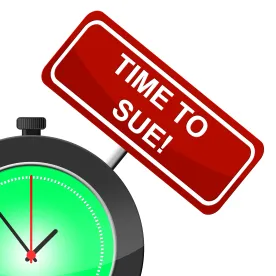The day that a plaintiff receives the U.S. Equal Employment Opportunity Commission’s (EEOC) notice of his or her right to sue starts the running of the ninety-day period to file a lawsuit—not the date the plaintiff (or the plaintiff’s lawyer) opens the link to the right-to-sue letter, according to the U.S. District Court for the Eastern District of Pennsylvania. On May 24, 2022, in Paniconi v. Abington Hospital-Jefferson Health, the court granted the employer’s motion to dismiss the complaint for failure to state a claim because the lawsuit was filed one day too late. The court held that the plaintiff, Denise Paniconi, who filed a race and religious discrimination lawsuit in federal court ninety-one days after the EEOC issued her a right-to-sue letter, could not proceed with her lawsuit.
Receipt of an email equals notice of its contents
The court held that Paniconi “received” the right-to-sue notice the day the EEOC sent her an email providing notice of an “important document.” Paniconi had to follow a link and log in to the portal on the EEOC’s website to access the document, which was her right-to-sue notice. The court calculated the ninety-day deadline to file a lawsuit from the date she received the email—not from the date her counsel opened the link and actually saw the right-to-sue letter. Paniconi’s filing of a lawsuit ninety-one days after receiving the EEOC’s email was one day too late.
Ninety-day window acts like a statute of limitations
The court reasoned that because the ninety-day time limit for filing a lawsuit “‘is akin to a statute of limitations,’” it could not be tolled absent an equitable reason. The court ruled that not opening a link in an email from the EEOC did not qualify as an equitable reason.
Three-day mailbox rule does not apply to emails
The court rejected Paniconi’s argument that the three-day “mailbox rule” (a grace period allowing three days for mail delivery) should apply to the calculation of the ninety days from which a charging party receives an email notification of a right-to-sue letter from the EEOC. The three-day rule did not apply because there was not a dispute about the date that Paniconi’s counsel received the EEOC’s email with the link to the right-to-sue letter, the court stated.




 />i
/>i
